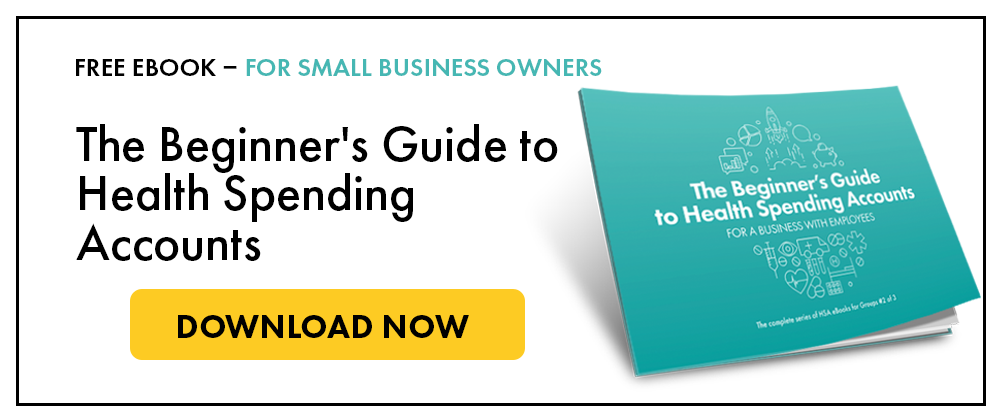New trends in employee benefits has shifted greatly, with alternative employee benefits such as remote work and caregiving responsibilities becoming prominent.
In this article, we discuss innovative approaches to benefits that have the potential to help both employers and staff. Sometimes employees need non-monetary benefits, such as the opportunity to work flexible hours or take a leave of absence to care for a loved one. These do not cost the employer and can go a long way towards shoring up morale.
Understanding Employee Benefits Return on Investment (ROI)
Benefits are about more than providing your staff with services to strengthen their health and wellbeing. They should also deliver a positive ROI to you as an employer. A well-managed benefits plan can enhance productivity, reduce absenteeism and support retention. When you head to the job market to find new team members, a strong benefits package will be a powerful recruiting tool.
The benefits ROI can be measured in dollars and cents. For example, a Deloitte Canada study in 2019 found that spending of $1 on mental health support for employees had a return of $1.62 in the first year and $2.18 after three years.
Deloitte CEO Anthony Viel says the cost of poor mental health is a $50 billion hit on the workplace every year. “The findings from this report provide a business case that is impossible to ignore,” Viel says.
Introducing Health Spending Accounts (HSA)s with high proven ROI:

What should HR focus on?
HR should focus on finding a benefits package that provides a positive ROI, while delivering the services and support that employees need.
Reducing Financial Worries
The pandemic has caused a rise in unemployment as retailers, restaurants and other businesses were forced to close for extended periods. And employees who still have their jobs may face reduced hours cut or may be anxious about their finances. An FP Canada survey found that 4 out of 10 Canadians are feeling more financial stress under covid.
Fearful employees need more support around finances. Some businesses are expanding their EAP programs to include financial planning or financial literacy education.
Remote Work
Many people are now working from home rather than going into an office – a trend that is expected to continue post-covid. This has made benefits like in-office gyms and free coffee less important.
At the same time, remote workers may be feeling more isolated. Employers must consider what benefits can help them to navigate this challenging time. One option is to provide flexible days where employees can take a few hours to pick up their kids at school or visit a loved one in hospital.
Mental Health
During the pandemic, Canadians have been facing increased stress, anxiety, and social isolation due to restrictions on gathering with family and friends. In a Canadian Mental Health Association survey published in December 2020, 40 percent of people reported that their mental health had deteriorated since the start of the outbreak.
Most employee benefit plans offer a handful of sessions with a therapist to support mental health. Clearly, that’s not enough. There’s also a recognition that in many cases services can be delivered effectively online or via telephone, rather than forcing someone to go to an office for an in-person visit.
Some organizations are being pro-active to keep people mentally healthy, rather than patching them up after they are in distress. Innovative benefits ideas include funding for yoga classes and mindfulness sessions. To support people in keeping their careers on track, mentoring can be delivered as well.
Caregiving
Long-term care homes have been limiting visitors to prevent the spread of the virus. This has left those in care homes feeling bereft and isolated. At the same time, caregivers are facing burnout from dedicating many hours every week to care.
Calls for support to the helpline of the Family Caregivers of British Columbia are up 180 percent since the start of covid, says Barb MacLean, executive director of the association.
Some of the alternative employee benefits employers can provide to support caregiving include:
- Flexible work hours: If an employee needs to spend the morning caring for a loved one, let them shift their worktime to afternoons and evenings.
- Support: Caregivers need good mental health services to manage stress and prevent burnout.
- Leaves from work: At some point during a caregiver’s journey, they may need to stop working temporarily to dedicate more time to their loved one.
Vacation/PTO Policy Trends
Generally, Canadian employers can require that employees use their annual vacation time by the end of the year. Recently, many people have been reluctant to go on holiday because travel restrictions dictate that it must be a staycation rather than a trip to somewhere exotic and fun.
As a business owner, you may wish to offer the opportunity for staff to carry over part of their leave time until next year. This non-monetary benefit could boost morale. Of course, you will need to analyze the impact such a policy would have on your staffing requirements.
The Benefits of Keeping Employees Informed
Finally, it is important to keep your employees informed about their benefits. Every year many benefits go unclaimed – these could be helping your team to reduce stress, enhance their physical health and care for loved ones.
Incorporated Contractor Employee Benefits
To many people’s knowledge, there are little to no benefit available to incorporated contractors. However, this is not the case. There is a tax-efficient option for health and dental called a Health Spending Account. The plan is built specifically for these types of small business owners. In a nutshell, the plan covers 100% of eligible medical expenses and reimburses 100% tax free on claims. For more information, download our Guide below.

×
Download list of eligible expenses